Let’s be honest — the mental health conversation has gotten loud lately. ADHD is everywhere. So is anxiety. And while it’s great we’re finally talking about it, no one seems to be asking the real question:
What if it’s not all in our heads — what if it’s in our food?
I’m not here to say Paleo is a magic bullet that cures ADHD or wipes out anxiety overnight. But if you’ve been living off bagels, seed oils, energy drinks, and “healthy” processed foods and wondering why your brain feels like it’s short-circuiting, maybe the problem isn’t your attention span. Maybe it’s your diet.
Let’s break it down.

The Gut-Brain Connection (Yes, It’s Real)
Your gut isn’t just about digestion — it’s literally wired to your brain through the vagus nerve. Around 90% of your serotonin is produced in your gut. So if your gut’s inflamed, your brain probably isn’t doing too hot either.
Modern diets — full of seed oils, refined carbs, and ultra-processed garbage — wreck the gut. They spike blood sugar, disrupt the microbiome, and trigger chronic, low-grade inflammation that screws with brain function. That foggy, anxious, overstimulated feeling? It often starts in your digestive tract.
Paleo helps by removing the most inflammatory offenders: grains, processed sugars, seed oils, and synthetic additives — and replacing them with nutrient-dense, ancestral foods your body actually recognizes.
Blood Sugar & Brain Chaos
Let’s talk about blood sugar swings. One of the worst things for focus and mood regulation is living on a rollercoaster of glucose spikes and crashes. You feel wired, then tired. Hyper, then fried. Sound familiar?
Kids and adults with ADHD often get labeled as “distracted” or “impulsive,” but rarely does anyone ask if they’ve had a breakfast packed with seed oils and 40g of sugar. A constant cycle of spikes and crashes isn’t a behavioral issue — it’s a fuel issue.
A Paleo diet — rich in healthy animal fats, quality proteins, and low-glycemic carbs (like fruit and roots) — provides stable energy. No crashes, no jitters, no need to reach for another sugary snack 90 minutes later.
Nutrients for a Clearer Mind
Let’s talk micronutrients, because ADHD and anxiety are often tied to deficiencies in things like:
- Zinc
- Magnesium
- Omega-3s (especially DHA)
- Iron
- B-vitamins
- Choline
Where do these come from? Animal foods. Organs. Egg yolks. Grass-fed beef. Wild-caught fish. Not your boxed cereal with synthetic “fortification.”
Paleo isn’t restrictive — it’s restorative. It gives your body (and brain) the raw materials it needs to function properly. When you’re chronically underfed at the micronutrient level, no amount of meditation or therapy is going to fix the system.
What Paleo Removes (And Why That Matters)
Here’s what you’re NOT eating on Paleo — and why that matters for mental health:
- Seed oils (inflammatory, oxidative, and brutal for the brain)
- Refined sugar (linked to mood swings, dopamine dysregulation, and attention issues)
- Gluten & grains (gut irritants for many, can impact focus and mood)
- Food dyes and additives (shown in some studies to worsen hyperactivity, especially in kids)
You’re not just removing junk — you’re removing triggers.
So… Does Paleo Cure ADHD or Anxiety?
No — but it helps regulate the system that these symptoms come from.
For some people, cutting out sugar and seed oils might reduce anxiety by half. For others, adding in liver, eggs, and magnesium-rich foods might make them feel calm and focused for the first time in years. For parents, feeding their kid real food instead of pre-packaged snacks might mean fewer meltdowns and better focus in school.
Is Paleo a replacement for therapy or meds? Not necessarily. But it’s a foundation. If your brain is starved, inflamed, or wired from blood sugar crashes, how can you expect it to work right?
Final Thought
If you’ve tried everything — meds, apps, supplements, hacks — and still feel off, maybe it’s time to simplify. Get back to how we were built to eat. No one thrives on Red 40 and canola oil. Paleo is about removing the noise and feeding your body (and mind) real, stable fuel.
Before you assume your brain is broken, check your inputs. Paleo isn’t a diet — it’s a return to human basics.
Sources:
- Mayer, E. A., et al. (2015). Gut/brain axis and the microbiota. The Journal of Clinical Investigation.
➤ https://www.jci.org/articles/view/76304 - Clapp, M., et al. (2017). Gut microbiota’s effect on mental health: The gut-brain axis. Clinical Practice & Epidemiology in Mental Health.
➤ https://clinical-practice-and-epidemiology-in-mental-health.com/VOLUME/13/PAGE/45/
- Arnold, L. E., et al. (2011). Iron and ADHD: A review of the current evidence. Nutrition Reviews.
➤ https://academic.oup.com/nutritionreviews/article/69/suppl_1/S1/1918281 - Liu, M., et al. (2021). Vitamin D, omega-3, and magnesium in ADHD: A systematic review and meta-analysis. European Child & Adolescent Psychiatry.
➤ https://link.springer.com/article/10.1007/s00787-020-01621-7 - Pelsser, L. M., et al. (2011). Effects of a restricted elimination diet on the behavior of children with ADHD. The Lancet.
➤ https://www.thelancet.com/journals/lancet/article/PIIS0140-6736(10)62227-1/fulltext
- Benton, D., & Donohoe, R. T. (1999). The effects of nutrients on mood. Public Health Nutrition.
➤ https://www.cambridge.org/core/journals/public-health-nutrition/article/effects-of-nutrients-on-mood/ - Jacka, F. N., et al. (2010). Association of Western and traditional diets with depression and anxiety in women. American Journal of Psychiatry.
➤ https://ajp.psychiatryonline.org/doi/10.1176/appi.ajp.2009.09060881
- Paul Saladino, MD. (2020). The Carnivore Code. Houghton Mifflin.
➤ https://carnivoremd.com — for nutrient-dense animal-based approaches to mental clarity. - Weston A. Price Foundation — Research and resources on traditional diets and mental/physical health.
➤ https://www.westonaprice.org

Leave a Reply